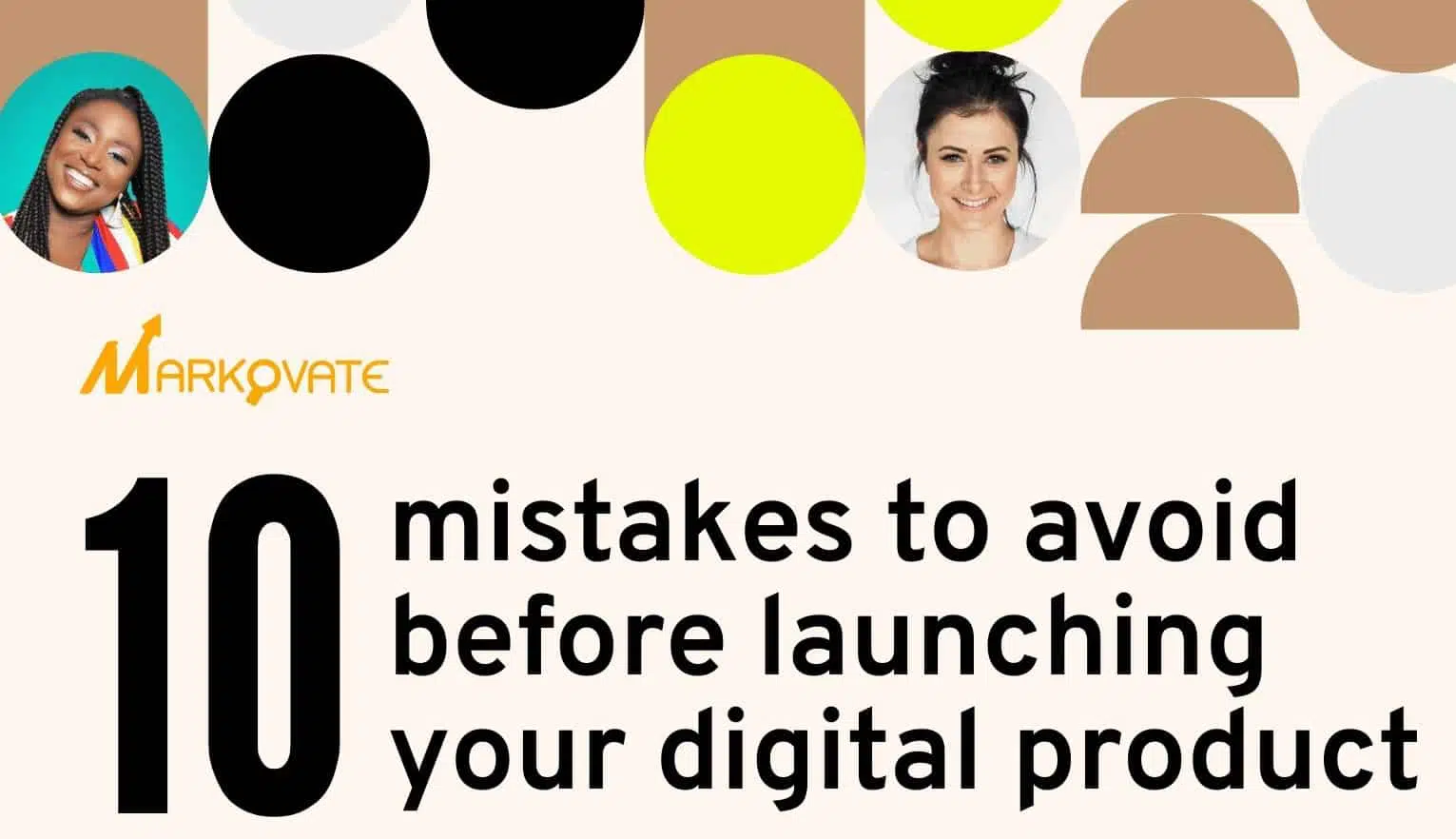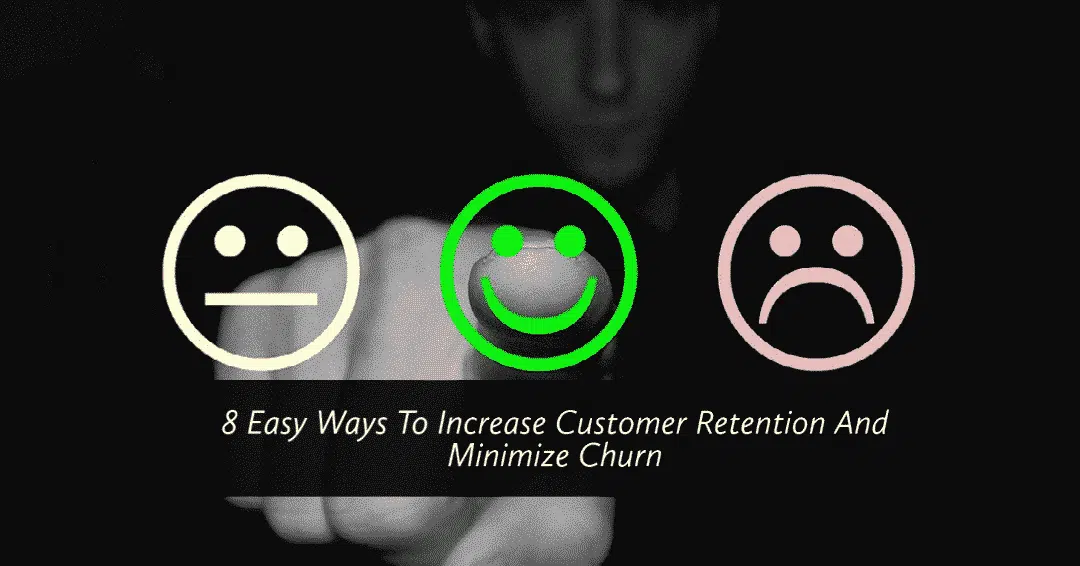You’ve done it!
Source: Giphy
You developed an outstanding digital product that checks all the boxes.
- Meets unfilled customer needs? Check!
- Undergone necessary product testing? Check!
- Optimized for online performance? Check!
Is it ready to be launched today? Let’s double-check.
Source: Giphy
We know what you’re thinking.
Now that your product is ready, the launch is a guaranteed success.
However, this isn’t always the case.
A recent survey found that 97% of business owners confirmed that they had a go-to-market launch plan before they launched their online products.
Before launching your product with the public, it’s important you take the time to remove as many potential barriers to success as possible.
Without the proper tools and planning, your product launch faces a greater likelihood of failure.
To help enhance your chances at success, we’re put together a list of 10 common mistakes to avoid before launching your online product.
1) Launching Without a Marketing Plan
Source: Giphy
Having a go-to-market plan is a must for a product launch.
Without a plan, a business can lose the opportunity to introduce the product to the right audience.
There would also be no timeline in place to get the necessary ROI.
Now the plan doesn’t have to be big.
The main objective should be to have a clear vision of who you’re targeting, what you’re selling, and the overall costs.
Once you construct a product marketing plan for your launch, it becomes much easier to measure success.
2) Skipping Pre-launch Marketing
Source: Giphy
Not know what makes you different
Without taking the time to determine what differentiates your product from others on the market, you risk getting lost in the mix.
It’s easy to follow along with recent trends, but that won’t make you stand out.
Identify how to set your business apart from others, making adjustments to the product as necessary.
Everyone’s not on the same page
Your team should move as one unit.
No matter which department they are from, each team member needs to be aligned on the brand’s image and product launch objectives.
If there isn’t a clear sense of unity between all channels then the launch will not run smoothly.
Having a clear brand voice for the product
A key to selling is consistency.
Once your product is established, a clear guideline on how to talk about it needs to be created.
You can’t enter the online market without knowing exactly what your product is and how you want consumers to respond to it.
Have a clear brand voice.
Layout a comprehensive marketing plan
Planning is everything.
Without a thorough and deliberate plan of execution, you will not get the desired results.
Before launching any product the time needs to be taken to develop the marketing strategies that will be used.
Build a roadmap for your product launch ahead of time, then trust the process.
Validate your product
It may sound strange, but one of the best things you can do before launching a product is making a sale.
In order to be successful, a new product needs evidence of its value.
An easy way to do this is by developing a landing page.
Start running ads. Focus on generating leads for your new product.
When potential customers hit the “Buy Now: button, it gives your product the validation needed to suppose the official launch.
Product Affinity
Pre-launch strategies help build an affinity among your prospective audience.
Building affinity is about more than selling your product. It’s about creating brand loyalty.
Prior to launching a new product, you want to instill in customers the sense that they are a part of something bigger.
Create a community centered around your product, and ultimately your brand.
This can be done in a wide variety of ways including influencer marketing, sales events, product drops, and online marketing.
The opportunities to establish product affinity are limitless!
All you need to do is find the strategies that work best for your business, and budget.
Time to Success
Concerned about how long it’ll take your product to become successful?
Waiting for a new product to start showing ROI can be tedious.
You’re going to have an even harder time seeing fast results without a proper pre-launch plan in place.
Potential customers won’t be ready to purchase the product if they don’t know about it ahead of time.
There’s an easy way, however, to reduce the time it takes to convert users into buyers.
Demonstrate the product during pre-launch!
This not only helps with sales after launch but also saves you time explaining how your product works.
You will make revenue much faster this way, and save valuable time.
Launch to No-one
As part of your pre-launch strategies, implementing an email campaign can sometimes eliminate the need for an official launch altogether.
Collect the emails of interested users who are ready to buy your product when it launches.
Then make a series of pre-sales right then and there.
This strategy will not only result in instant sales but also increase your product affinity.
You receive immediate ROI, while they develop increased loyalty to your brand.
It’s a win, win scenario for you.
More Budget
Product launches on their own are expensive.
If you do not put the time and money into pre-launch strategies, your product won’t have the necessary foundation to be successful.
You need to set up the marketing tactics beforehand if you want better results.
Establishing credibility, validation, and interest for a new product all take time.
A product launch without pr-planning would cost more because you would need to see immediate results in order to start building a user base.
Spend your budget wisely.
Delays in Funding
Often, a great product alone won’t earn you great funding.
You need to prove the product is marketable.
Demonstrate there is a strong user base that will not only benefit from what you are offering but also want to.
Having a long list of early access subscribed users can help with this.
Especially if they are already interested in your product launch.
This will impress investors, and give them more confidence in your product for future funding.
3) Do Not Launch Without a Market Analysis
Source: Giphy
Remember to consider the full 360 degrees of taking a product to market!
Validate your product ideas
As mentioned, developing a landing page is the best way to validate your new product.
Running ads to promote your product during pre-launch will not only help drive traffic but also generate new leads.
Validating your product ahead of time will give you a clear idea of your audience’s reach.
Be aware of existing similar products
It is essential to conduct thorough research into any existing products that are in direct competition with your own.
Conduct a complete breakdown of what makes them similar, and how you can set yourself apart.
What solutions does your product offer that isn’t already on the market?
Customize your product offerings to complement the current market situation
The market is always changing, along with consumer interests and needs.
Designing your product to meet the current market trends will provide you with a better opportunity to be successful from the start.
While it’s important to stand out, you need to move with the market.
Choose the right time to launch if your product is seasonal
Be smart with your product launch.
Determine the best time of year to target your audience. Especially if the product solves a seasonal problem.
Build your plan around that.
4) Do Not Exclude Social Media
Source: Giphy
There are over 3.8 billion social media users. You cannot ignore the impact it will have on your product, both pre and post-launch.
Identify your target audience’s behaviour and interests, then use this information to target them directly on all social media channels.
Focus on launching organically using SEO practices.
Do not only use paid ads to get traffic but also continuously optimize your product website using SEO strategies for better results.
5) Not Focusing on Content Creation
Source: Giphy
Successful product launches are dependent on positive customer relationships.
Take the time to educate your potential customers before, as well as during the product launch process.
Share relevant content that will nurture your pre-existing connections.
Leveraging useful content is the first step in customer acquisition for a new product.
Bring them from consideration to a buying stage by providing strategic content that not only adds value but also informs them about your product.
Measure, See and Analyze
6) Incomplete Tracking Setups
Make sure you are able to track and identify incoming traffic from different market channels.
Every stage of your product launch needs to be measurable in order to accurately determine goals, and set deadlines for success.
Take the time to properly set up an analytical dashboard from the start.
This will allow you to have a deeper understanding of your users, their demographic, and engagement behavior.
Once you have this information, it becomes easier to target the areas with a higher potential for ROI.
The more data you collect from each different channel, the better informed your marketing decisions will be.
7) No KPI Dashboard
Source: Giphy
You can’t measure success without tracking key performance indicators (KPIs).
At the start, determine which KPIs will be used to track your product’s performance.
Establish a master dashboard before launch where you can review all the important KPIs throughout the campaign.
Be sure to update the dashboard on a daily basis, using it to make critical and informed decisions based on the data collected.
Having the ability to shift your strategies based on existing data will ensure better results in the long term.
8) Launching Without a Video
Source: Giphy
Developing an aesthetic website and graphics is not enough to convince buyers to purchase your product.
You have to capture their attention.
Provide them with a clear, engaging demonstration of how your product works.
A product explainer video is ideal for this.
Put together a short clip that easily shares what your product is, and how customers can use it to solve their problems.
Allow them to connect with the product ahead of time.
9) Insufficient Marketing Budget
Knowing how much you are prepared to spend on marketing from the start determines the types of strategies that can be implemented.
There is no use putting the entire budget into product development without having a plan to go to market.
Developing a great product will only get you so far.
If you do not consider the value of marketing in connecting with and selling to your audience, then don’t expect a successful product launch.
At a minimum, experts recommend allocating 40% of your budget to marketing.
This should also include a contingency for product improvement.
Once data starts being collected, you can use feedback to further adjust your product to meet additional customer needs.
10) What to do next?
Needless to say, launching a new product takes a lot of work.
From development to pre/post-launch marketing and beyond, it can be a very time-consuming effort.
Whether it’s your first time, or you’re a seasoned pro at this point, getting advice from a team of experts may help.
It might even be useful to consult a marketing agency to get a quote on the pre-launch, launch, and post-launch marketing at least 3 to 4 months before the actual product launches.
Use it as an opportunity to brainstorm strategies, ask any questions you may have regarding the product launch process, or get support in a particular area you’re struggling with.
Whatever your marketing needs are, it never hurts to get a second opinion.
Here at Markovate our team of product launch experts is eager to help you reach your goals, and achieve the best ROI possible.
Contact us today to set up a strategy session.















